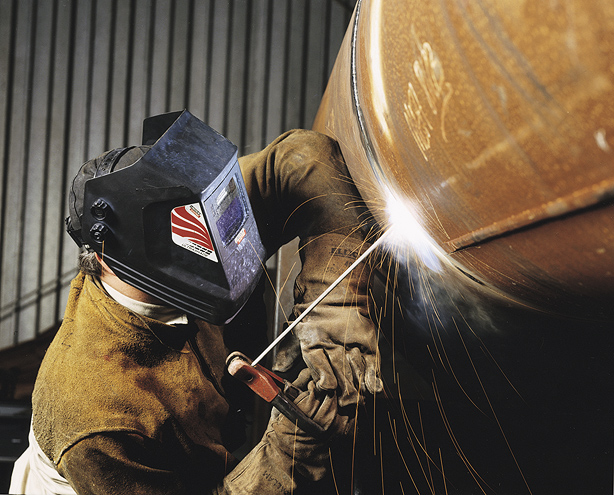TIG Welding (Tungsten Inert Gas Welding)
TIG is technically stands for GAS Tungsten Inert Gas Welding.
TIG is also a type of welding process, which is known as tungsten inert gas welding. In this Process arc is produced between non-consumable tungsten electrode and base metal and simultaneously consumable filler metal filled at the welding spot. Filler metal are consumable TIG filler in the forms of rods in different different diameter.
The weld area is protected is protected from atmospheric contamination by an inert shielding gases such as helium and argon, and filler metal is feeded separately to weld .TIG is commonly used to weld thin section of stainless steel and non ferrous metal such as aluminium, magnesium, and copper alloy.
The weld area is protected is protected from atmospheric contamination by an inert shielding gases such as helium and argon, and filler metal is feeded separately to weld .TIG is commonly used to weld thin section of stainless steel and non ferrous metal such as aluminium, magnesium, and copper alloy.
TIG process requires continuous movement of two hand, first hand to feed the filler metal in weld area and other to manipulate the torch in required direction. The important factor in to be maintain arc length and preventing the contact between electrode and work piece
Once the arc is struck, welder moves the torch in a small circle to create welding pool, size of which depends on size of electrode and amount of current. while maintaining a constant separation between the electrode and workpiece, the operator then moves the torch back slightly and tilts it backward about 10-15 degree from vertical. Filler metal is added manually to the front end of weld pool as it is needed.
.
TIG always gives a better result in quality aspect, because it affords better control over the time of welding process thru the welding area. For better quality always it requires a very skill operator, Cleanness, Surfaces & equipment's should free from oil, grease, dirt, impurities and contamination for a better result in the form of welding strength.
Shield gases always plays a vital role in welding process, it covers the welding pool by shield gas that prevent the welding pool from atmospheric contamination such gases are nitrogen and oxygen. Argon is most commonly used gas for GTAW for high quality welding and HELIUM is often used for high penetration.




